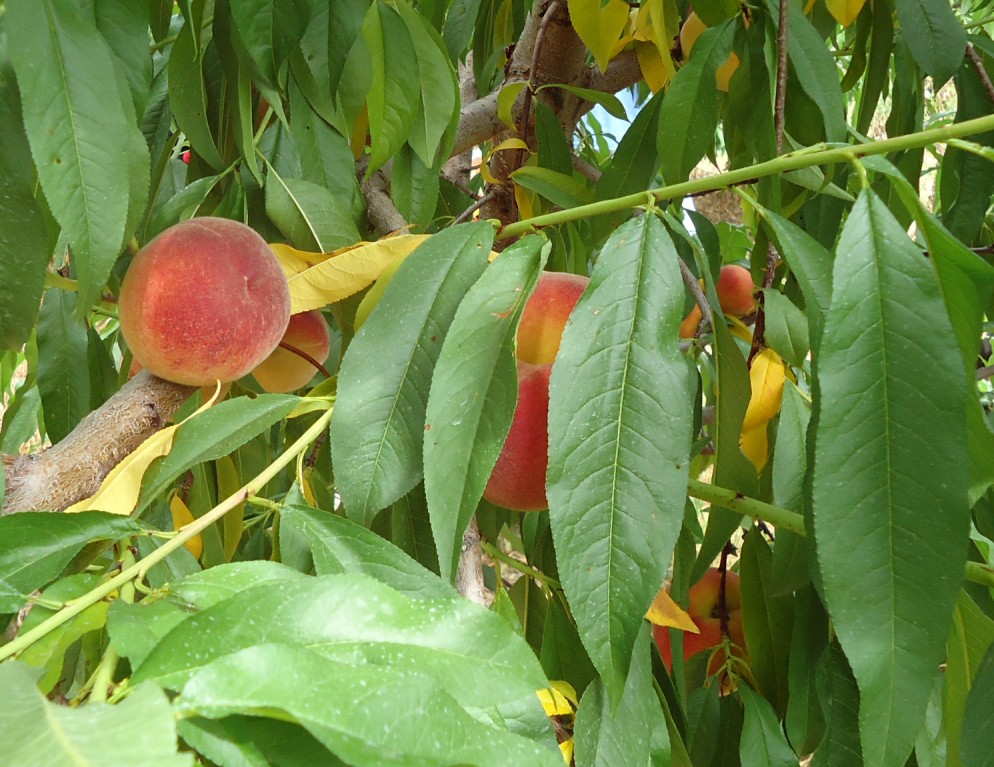Peach and Nectarine

Peaches on Tree
Peach is the vernacular name commonly used for the deciduous tree Prunus persica L. (Rosaceae), as well as to its fruit; nectarines are smooth-skinned peach mutants. The peach, which is of Chinese provenance, is nowadays grown mostly in Mediterranean countries (Italy, Spain and France), in the USA, in China and in the former USSR.
The fruit has a soft, yellow to pink, thin skin, fleshy yellow “meat” (the mesocarp) and a stony shell within which lies the kernel. The latter may contain cyanogenic glycosides, which can cause severe poisoning. Peach (and nectarine) does best in well drained, medium-texture soils. As the trees suffer from high humidities, orchards should be planted on slightly sloping sites, in order to encourage air drainage and to reduce frost.
Due to their soft skins and high moisture content peaches are best harvested by hand, although several modes of mechanical picking have been developed. Peach fruit fragility also requires careful post-harvest handling. Peaches, which are sold for processing or as fresh, edible product, are then cooled and sent to the factory or to the market. The 2002 world crop of peaches and nectarines came to about 14,000.000 tons, the major producers being the USA, Spain, China and Italy. By the year 2004 Israel had about 4000 hectares planted to peaches.
Major Peach pests in the Middle East
References
Anonymous, 2003. FAO Production Yearbook for 2002 # 56. FAO, Rome, Italy.
Anonymous, 2003. Statistical Abstract of Israel # 54. Central Bureau of Statistics, Jerusalem.
Cohen, M. (Ed.) A Guide to Integrated Pest Management of Stone Fruits in Israel. Pest Identification, Monitoring and Treatment Thresholds. Fruit Board of Israel (in Hebrew).
Joshi, V.K. and Buthani, V.P. 1995. Peach and nectarine. In: Salunkhe, D.K. and Kadam, S.S. (Eds.), Handbook of Fruit Science and Technology, Production, Composition, Storage and Processing, pp. 243-296. Marcel Dekker, New York.
Websites:
http://images.google.com/images?q=Prunus%20persica&hl=en&lr=&ie=UTF-8&oe=UTF-8&sa=N&tab=wi
